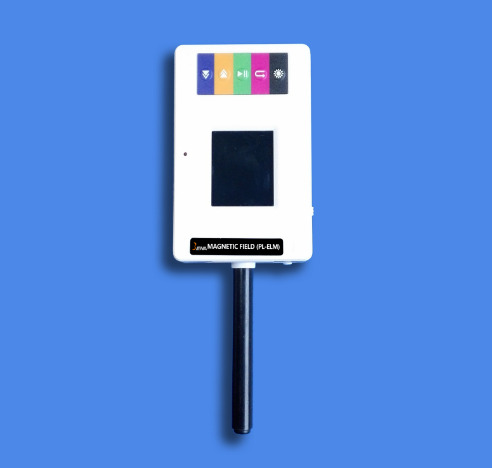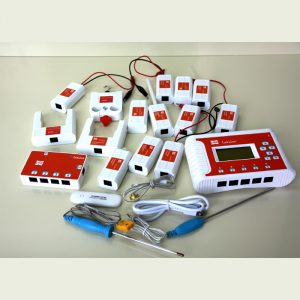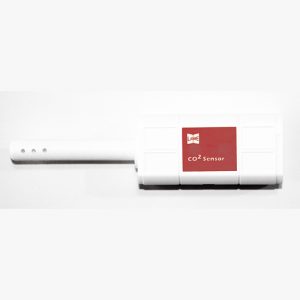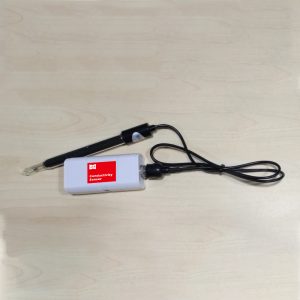
Wireless galvanometric sensor (Wireless Micro-current Sensor)
August 1, 2025
Wireless sound sensor
August 1, 2025Wireless magnetic field sensor
Range: -84 mT to +84 mT
Resolution: 0.01 mT
I. Working Principle
The sensor employs a Hall effect transducer, which outputs a voltage linearly proportional to the magnetic flux density of the applied magnetic field. The probe housing is made of plastic, and the probe measures the axial component of the magnetic field along the plastic tube. When no magnetic field is present in this direction, the sensor outputs a voltage of 2.5V (corresponding to 0 mT).
II. Specifications
Range: -84 mT to +84 mT
Resolution: 0.01 mT
III. Structure and Functions
1. Equipped with a 1.8-inch color LCD screen.
2. Configured with five functional buttons for simple and convenient operation.
3. Supports high-speed USB data transfer for rapid communication with data acquisition devices.
4. Enables wireless communication with experimental terminals.
5. Includes a built-in high-capacity removable battery.
6. Provides a sensor interface with snap fasteners, compatible with standard sensors for combined experiments.
7. Includes mounting holes for fixation on iron stands for integration with traditional equipment.
8. Compatible with common operating systems such as iOS, Android, and Windows.
IV. Typical Applications
The magnetic induction sensor is designed to measure magnetic fields in space, commonly used for detecting fields near permanent magnets or inside current-carrying solenoids. It can measure both the magnitude and roughly determine the direction of magnetic flux density. Typical applications include:
– Measuring geomagnetic field strength.
– Research on strong magnetic fields.
– Investigating the relationship between magnetic flux density in solenoids and current.
V. Note
This product is suitable for educational purposes only and is not intended for industrial, medical, research, or commercial applications.
VI. Usage Tips
1. Software convention: When the probe is moved toward the N pole of a magnet, the reading is negative; when moved toward the S pole, the reading is positive.
2. The absolute value of the reading represents the magnetic flux density component parallel to the probe’s axial direction.
3. Minimize external magnetic interference during use to ensure accurate measurements.





Reviews
There are no reviews yet.